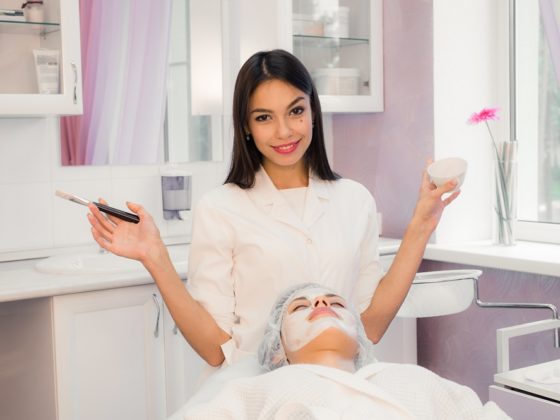Isn’t it frustrating when you find out that a client hasn’t been using her home-care products as recommended, or has decided to use the latest celebrity-endorsed product instead? This is notorious especially for teenagers that are under acne management. Some clients may brush off your recommendations altogether. If only clients did what we told them, wouldn’t our job be so much easier?
As confounding as it is, there is one consistent theme that underlies most issues with client compliance—education. There will always be some people who are just not ready to do what it takes to achieve their skin care goals, but most of the time, when clients find out why they need to follow your recommendations, they will be more willing to do so.
Set the Right Tone
One of the first things I do when prospective clients inquire about services is set the tone of an expert consultation. Even if they ask for a specific service, such as microdermabrasion, I will explain that the first step is a consultation with me so I can determine the best course of action for their skin and establish the treatment plan.
Skin care professionals need to embrace their role as experts in their field. When clients go to other professionals, they expect to present their goal or problem and then let the professional guide them. Can you imagine a medical doctor asking a patient, “What type of treatment would you like?”
Each client should leave your initial consultation with a home-care regimen and a treatment plan, knowing exactly what to do and when to come back. I remind my clients that if they have any issues with the products, or if their skin is reacting (for example, getting uncomfortably dry), they must contact me. I warn them not to change their home-care products without consulting me first. I actually have my clients sign an agreement form, spelling out all these expectations.
Of course, there are always going to be exceptions—clients who want to call the shots no matter what. In that case, consider the individual situation and decide whether it is something you can live with. In the middle, however, are those who just need a little extra nudge toward medical compliance.
Clients Who Switch Beauty Products
Inevitably, there will be a client who says, “Well, I decided to stop using that product,” or “I decided to use something else.” There is nothing that raises my hackles more than these phrases. However, responding with any hint of criticism can make the client dig in her heels in defense. Swallow your feelings and become an educator. I go over in detail why we are using this product and the esthetic consequences of not doing so. I then politely ask if she is willing to follow my instructions, pointing out that if the answer is no, then we might not be a good fit.
Clients Who Don’t Do Their Proper Skincare Routine
Another type of non-compliant client is the one who claims she is doing her at-home routine when I know she is not. When working with acne clients, non-compliance at home is glaringly obvious. A closer look at the skin will reveal whether active products are being used on a regular basis. I even check my retail accounting to see how long it is taking clients to use up the products they purchased.
There is an art to tactfully busting clients who use their products inconsistently. Instead of asking, “Are you using your home-care products?” get more specific and ask, “Do you ever skip your skin care routine?” If the answer is yes, ask, “How many times a week do you skip?” The client is more likely to be forthcoming when asked in this manner.
If the answer is no, but I am still certain the client is being non-compliant at home, I will say, “I am concerned that you may not be using enough product or that you might be skipping your routine more than you realized.” Again, I become the educator, informing clients how the system works. For example, in the case of acne, I point out that the products keep new acne from forming. Every time they skip their home care, acne starts to form and they will chronically break out at a later date. Once they understand this, they take their home-care regimen more seriously.
Clients Who Fall for Beauty Marketing Hype
Another common scenario is when clients want to use a product they have heard about, usually one that has gotten a lot of hype, instead of using your professional products. Once again, it is imperative you educate them. I let them know that any mass-marketed product can never have as much active ingredient in it as a professional product, because mass-market retailers have too much concern for liability issues to use products that can truly have a profound impact on the skin.
I also let the client know about the practice called “angel dusting,” which means including a miniscule amount of an active ingredient, insufficient to cause any measurable effect, in a product. The advertising materials can then say that the ingredient is helpful, and that the ingredient is contained in the product, both of which are technically true. While misleading and unethical, angel dusting is legal, and your clients need to be aware of the practice so they are not so easily seduced by marketing.
Clients With Unrealistic Expectations
Even though I tell my acne clients in the initial consultation that it will take around three months to completely clear up their skin, I still occasionally get a client exclaiming, “I have been on your products for a week and I am still breaking out!” Of course people want instant results. When this happens, take a deep breath and patiently educate the client again about why it takes time to see changes in the skin. Remind him that patience and consistency with his treatments and home-care routine will win the race. Good before and after pictures of previous clients can be very helpful here, proving that you can deliver.
Clients with Time or Money Objections
When a client balks at your recommendations, try to find out exactly what her objections are. It almost always comes down to time and/or money.
At the outset, I put the ball in the client’s court by asking her, “How aggressive do you want to be with your skin rejuvenation program?” The more aggressive the treatment, the more time and/or money she will probably have to invest in it. The upside to this is that the more aggressive the treatment, the more responsive the skin will be, with better and quicker results. After explaining this, I make my recommendations based on the client’s own stated comfort level.
Always have a few different options in mind. If the client says no to your best recommendation, discuss the next best option. If your client’s main objection is the expense, offer either an alternative treatment plan or an alternative payment plan. If time is the issue, offer shorter treatments at more frequent intervals, or more intensive treatments at longer intervals. Consider the client’s schedule. For example, when I do more aggressive peels at my clinic, if my client has the weekends off, I recommend she come in on a Wednesday evening. On Thursday, her skin will feel tight, but she will still look normal. Friday afternoon is when the skin usually starts to peel, and the weekend is when the majority of the peeling takes place. This explanation makes a chemical peel sound very doable to most clients.
Non-compliant clients may not be our favorites to deal with, but they can keep us on our toes. Some people may be merely testing you to see if you really believe in your offerings. If you are confident in the results you can get, then managing the non-compliant client becomes an easier task. There is no need to become angry or defensive—embrace resistance with creativity, education, and healthy business boundaries. Your reputation depends on it!
References:
- Bailey, R. L. (2011). A study of the factors impacting women’s purchases of anti-aging skincare products (Doctoral dissertation, uga).
- Mayoral, F. A., Kenner, J. R., & Draelos, Z. D. (2014). The skin health and beauty pyramid: a clinically based guide to selecting topical skincare products. Journal of drugs in dermatology: JDD, 13(4), 414-421.
- Vinson, T. (2013). The case for consultation. Professional Beauty, (Jan/Feb 2013), 160.








